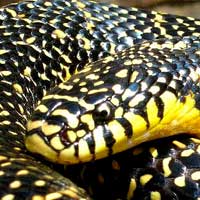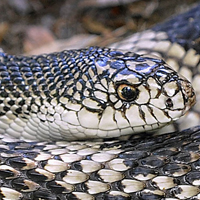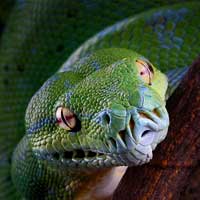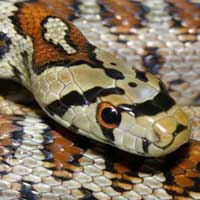Mexican Black Kingsnake: Everything You Need to Know About This Stunning Reptile
The scientific name of the Mexican Black Kingsnake is Lampropeltis getula nigrita. It belongs to the Colubridae family, which is the largest family of snakes and includes a wide range of non-venomous and mildly venomous species.
Scientific Name: Lampropeltis getula nigrita
Snake Family: Colubridae
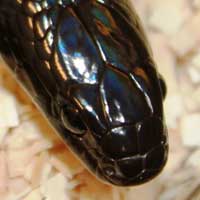
Introduction to the Mexican Black Kingsnake
The Mexican Black Kingsnake (Lampropeltis getula nigrita) is a strikingly beautiful, non-venomous snake native to the southwestern United States and northwestern Mexico. Known for its glossy, jet-black scales, it is a popular choice among reptile enthusiasts. Its manageable size, calm demeanor, and hardy nature make it an excellent pet for beginners and experienced keepers alike.
Where Does the Mexican Black Kingsnake Live?
The Mexican Black Kingsnake is native to arid and semi-arid regions, thriving in diverse habitats across its range. These snakes prefer areas with ample cover and a steady supply of prey.
Preferred Habitat Features:
- Deserts and scrublands
- Grasslands and meadows
- Rocky hillsides
- Suburban areas near water sources
| Region | Habitat Type | Key Features |
|---|---|---|
| Arizona | Deserts | Arid climate, sparse vegetation |
| Northwestern Mexico | Rocky areas | Sheltered crevices, dry terrain |
| Southwestern USA | Grasslands | Open fields with small prey |
What Does the Mexican Black Kingsnake Eat?
The Mexican Black Kingsnake is a carnivorous predator, known for its ability to consume a wide variety of prey. Its diet is one of the factors that make it an efficient and adaptable species.
Common Diet:
- Rodents such as mice and rats
- Lizards and small reptiles
- Birds and their eggs
- Other snakes, including venomous species
In captivity, feeding frozen-thawed rodents is the safest and most convenient option. Juveniles should be fed every 5-7 days, while adults require feeding every 10-14 days. Always ensure the prey size is appropriate for the snake’s size.
Behavior and Temperament of the Mexican Black Kingsnake
The Mexican Black Kingsnake is known for its calm and docile nature, making it a favorite among pet owners. While it is generally easy to handle, it may exhibit defensive behaviors when startled.
Key Behavioral Traits:
- Non-aggressive and easy to handle
- Active during the day and early evening
- May hiss or coil defensively when threatened
- Highly inquisitive and exploratory
With regular and gentle handling, these snakes adapt well to human interaction and make excellent pets for keepers of all experience levels.
Health and Lifespan of the Mexican Black Kingsnake
The Mexican Black Kingsnake is a hardy species with a lifespan of 15-20 years in captivity when provided with proper care. Regular monitoring of its health and environment is crucial for its longevity.
Common Health Concerns:
- Respiratory infections caused by improper humidity
- Shedding issues due to low humidity
- Parasites, especially in wild-caught specimens
Maintain a temperature gradient of 75-85°F, provide a clean water source for hydration and soaking, and keep the enclosure clean to prevent health issues. Regular check-ups with a reptile veterinarian are recommended.
Reproductive Traits of the Mexican Black Kingsnake
The Mexican Black Kingsnake is oviparous, laying eggs after mating. Breeding typically occurs in the spring, with females laying eggs in early summer.
Reproductive Details:
- Mating season: Spring
- Clutch size: 6-15 eggs
- Incubation period: 50-70 days
- Hatchlings are independent at birth
In captivity, successful breeding requires simulating natural seasonal changes and providing a suitable nesting area. Incubate eggs at 82-85°F for optimal hatching.
How to Handle and Care for the Mexican Black Kingsnake
Caring for the Mexican Black Kingsnake is straightforward, making it a popular choice for reptile enthusiasts. Providing a secure and comfortable habitat is essential to its well-being.
Handling and Care Tips:
- Handle regularly and gently to build trust
- Provide hiding spots and climbing branches in the enclosure
- Maintain proper humidity and temperature levels
- Offer a varied diet of appropriately sized prey
With proper care, the Mexican Black Kingsnake can thrive in captivity, offering years of enjoyment and fascination to its keeper.



